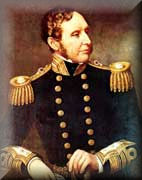Home
Royal Navy Instructor Officers
How Meteorology became part of
the Royal Navy
Origins | History | Development | World War 2 | D-Day Weather | D-Day Personalities
HistoryDespite the fact that we are an island race who have been reliant upon ships to leave these shores from time immemorial and, more importantly, have needed ships and some sort of navy to repel the invading hoards; meteorology and the Royal Navy have been seriously linked together for less than two hundred years. In fact the RN has had its own meteorological branch for just short of one hundred years. Through a series of articles it is hoped to reveal some of this fascinating history for the very first time. For many years weather was recorded in the Captains log book every day the individual ship was at sea. This was not just military ships but merchantmen as well. Where did the knowledge come from and what was the training? The answer is simple, the only training was a lifetime’s experience of being at sea and building up the ability to recognise certain signs and situations and the effect they had upon the ensuing weather. Instruments for reading, recording and observing weather were very few and had to be of questionable reliability, taking into consideration all the changes in temperature and humidity not to mention the ability and knowledge to calibrate the instruments correctly. Strange as it may seem many of the sayings and ‘old wives tales’ about the weather and signs predicting certain phenomena purportedly originated from these old salts, who managed to circumnavigate the globe relying on these predictions to a greater or lesser extent, some of which bear more than a grain of truth. For hundreds of years the Royal Navy and other shipping managed to sort the vagaries of the weather for themselves, trained meteorologists were not really necessary until sailing the seven seas and equipment on board ships began to become more mechanised. With the advent of Admiral Beaufort’s gale warning scale and with Admiral Fitzroy as first head of the Meteorological Office, information started to become more readily available. This ad hoc but very successful situation lasted for many years until flight and aviation became an integral part of the armed forces remit.
As can be seen from previous paragraphs, the Royal Navy has always been involved with the Met Office to a greater or lesser extent. Admiral Robert Fitzroy was appointed Head of the Meteorological Department of The Board of Trade in 1854, (forerunner if the Met Office); he had always had an interest in meteorology and became a pioneering meteorologist who championed the accurate forecasting of the weather and indeed made it a reality with the introduction of the Fitzroy barometer. Although invented in the 1640’s, the mercurial barometer was named after him showing, in no small measure, the esteem in which he was held. Fitzroy had always been a hydrographer and once the Royal Navy became officially interested in meteorology, and the need for personnel with training in the subject, it did not take the Admiralty Board long to decide that the Naval Met Service should come under the Hydrography Department and answerable to the Hydrographer of the Navy. A decision that still holds and has remained the same apart from a period from 1950 until the mid 1960’s when the Met Branch was autonomous.
When the Royal Navy purchased Mayfly 1 in 1909 their Lordships began to think seriously about meteorology, hence by 1912 the request that some naval officers with an interest be trained by the Meteorological Office, and so the first course was born. Come the First World War these few plus some extras were appointed to the large ships carrying planes where they fitted met in around their regular duties with very varied degrees of success it must be assumed. There is little record of how useful this was during the Great War and once the Royal Naval Air Service and the Royal Flying Corps were merged in 1918 to become the Royal Air Force, meteorology in the armed forces ceased to be of great importance for a while, leaving weather forecasting to the Meteorological Office again. Sources: |
 Admiral Beaufort
Admiral Beaufort  Admiral Robert Fitzroy
Admiral Robert Fitzroy